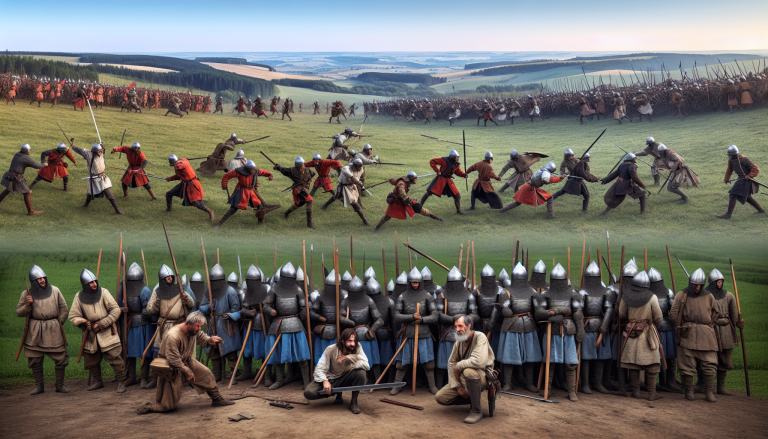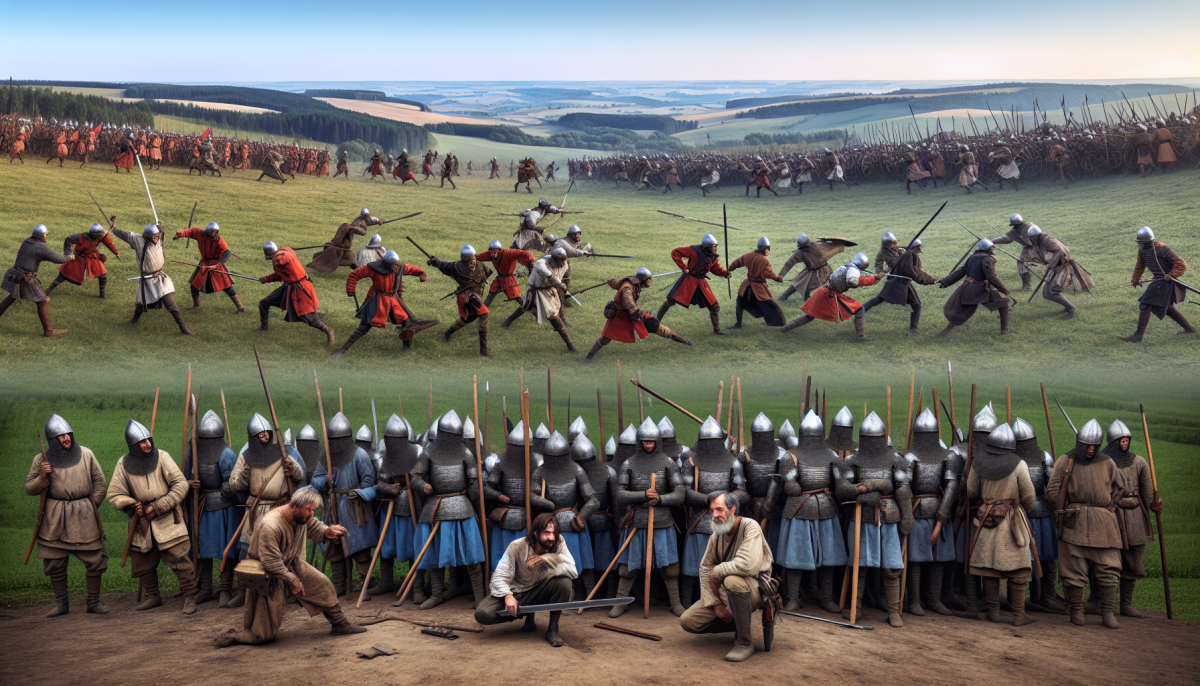The Battle of Zappolino: When Futility Met Farce
In the annals of history, there are moments so deliciously absurd that they seem almost too good to be true. Such is the case with the Battle of Zappolino, a military blunder so magnificently futile that it can only be described as a shining example of the old adage “beating a dead horse.”

The year was 1467, and the stage was set for a decisive clash between the forces of the Gonzaga family and their bitter rivals, the Estensi. The Gonzagas, rulers of the city of Mantua, had long been embroiled in a power struggle with the Estensi, the ruling dynasty of Ferrara. As tensions reached a boiling point, the two sides decided to settle their differences on the battlefield.
The Gonzagas, led by the formidable Marquis of Mantua, assembled a formidable army and marched toward the town of Zappolino, where the Estensi forces had taken a defensive position. Confident in their superior numbers and the might of their cavalry, the Gonzagas were convinced that victory was theirs for the taking.
The Blunder Heard ‘Round the World
As the armies clashed, the battle quickly descended into chaos. The Gonzaga cavalry, eager to secure a swift and decisive victory, charged headlong into the Estensi lines, only to find themselves trapped and surrounded. What followed was a masterclass in military futility, as the Gonzaga horsemen frantically attempted to break free, only to be met with a barrage of arrows and spears from the well-entrenched Estensi forces.
“It was,” as one chronicler wryly noted, “the equivalent of beating a dead horse with a stick – a futile effort doomed to failure from the start.”
The Gonzaga infantry, unable to support their beleaguered cavalry, watched in dismay as their comrades-in-arms were systematically cut down. The battle had become a rout, and the Gonzagas, realizing the futility of their position, began a hasty retreat.
The Aftermath: A Comedy of Errors
But the humiliation of the Gonzagas was far from over. As they fled the battlefield, the hapless soldiers encountered a series of obstacles that only added to the farcical nature of their defeat.
First, they stumbled upon a narrow bridge that had been partially destroyed, forcing them to squeeze through a single-file line. The resulting chaos was a sight to behold, as the soldiers jostled and shoved, desperate to escape the pursuing Estensi.
“It was like watching a clown car unload at a circus,” one eyewitness remarked. “The Gonzagas were tripping over each other, desperate to get away, and it was all I could do to keep from bursting out laughing.”
But the indignities did not end there. As the battered Gonzaga army struggled to regroup, they encountered yet another obstacle – a herd of stubborn mules that had taken up residence on the road. Undeterred, the soldiers attempted to shoo the mules away, only to be met with a barrage of brays and kicks.
“It was as if the very animals themselves were mocking the Gonzagas’ misfortune,” one observer noted. “The mules stood their ground, refusing to budge, and the soldiers were forced to waste precious time and energy trying to dislodge them.”
The Lasting Legacy of Futility
The Battle of Zappolino has since become a byword for military futility, a cautionary tale of overconfidence and poor planning. The phrase “beating a dead horse” has been used to describe the Gonzagas’ hapless efforts, a vivid metaphor for a hopeless and fruitless endeavor.
“The Gonzagas,” wrote one historian, “went into that battle with visions of glory and triumph, only to emerge as the butt of a cruel cosmic joke. Their attempts to salvage victory were about as effective as trying to revive a long-dead equine – a futile exercise in the extreme.”
Today, the Battle of Zappolino stands as a testament to the folly of hubris and the importance of strategic thinking. It serves as a reminder that even the mightiest of armies can be undone by a simple lack of foresight and a touch of comedic misfortune.
As for the Gonzagas, their reputation never quite recovered from the debacle at Zappolino. The phrase “beating a dead horse” became a constant reminder of their epic failure, a humorous epitaph to a military campaign that was doomed from the start.
